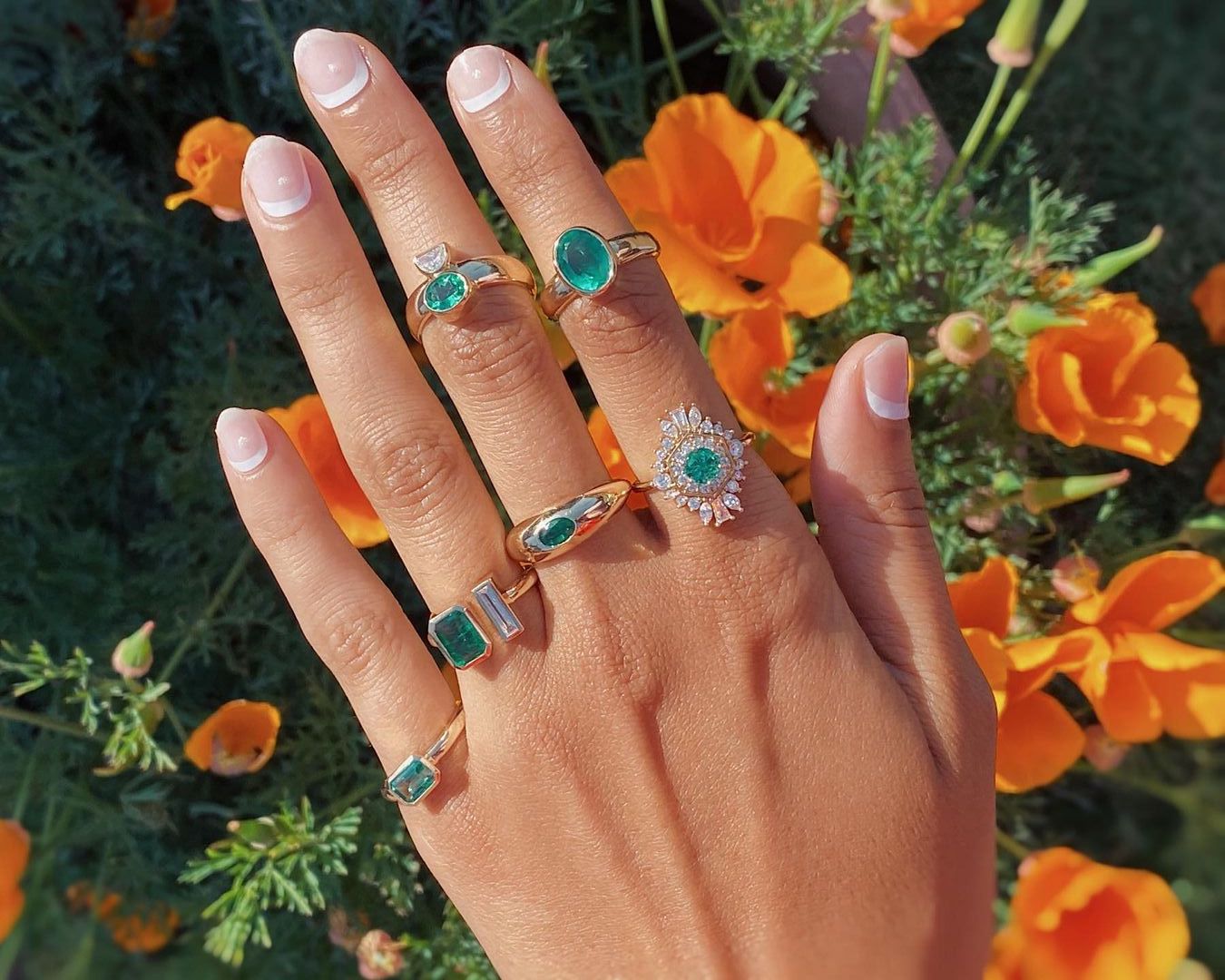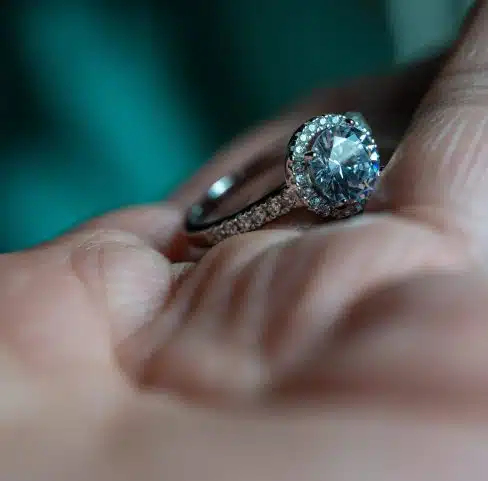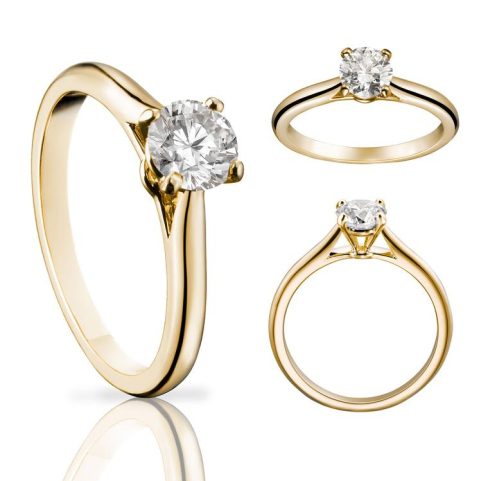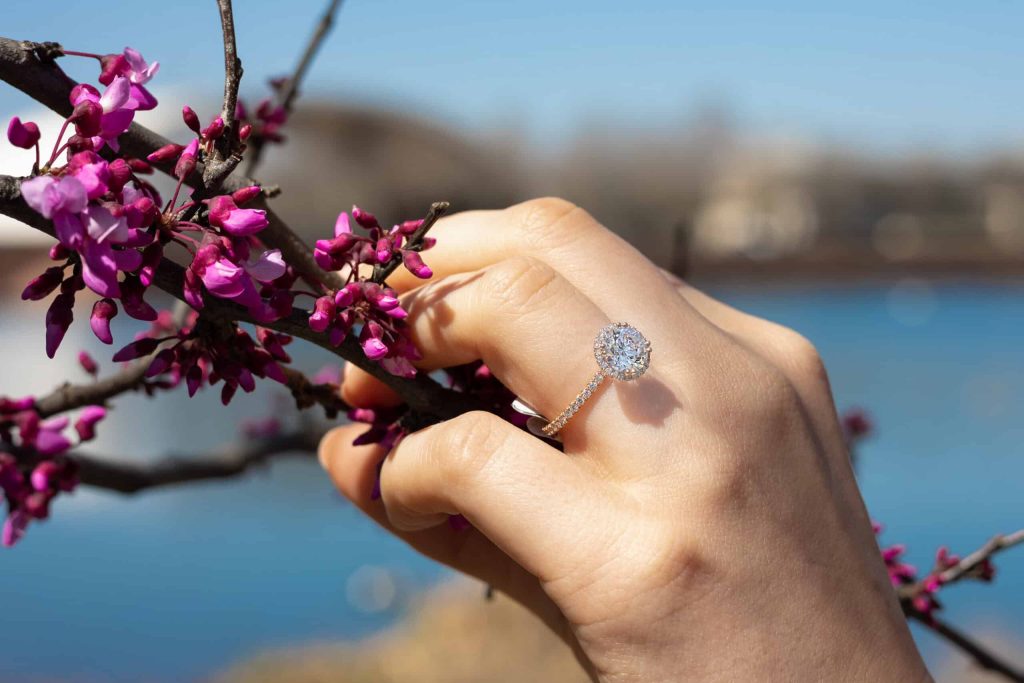
There’s a reason diamonds are considered such a classic choice when it comes to engagement rings. One of the strongest naturally occurring substances on earth and able to withstand almost anything, diamonds symbolise the kind of forever love and commitment that come with marriage. But for all of their durability and beauty, diamonds aren’t the best choice for everyone. If you’re looking for a less expensive or more unique engagement ring, you might want to consider a diamond alternative instead.
After all, there’s certainly no rule that says you have to have a diamond as your centre stone in your engagement ring. There are plenty of other gemstones out there that make for gorgeous rings that are ideal for everyday wear and will stand out in a crowd. Celebrities such as Gwyneth Paltrow, Eva Longoria, and Halle Berry are just a few who have opted for other colourful stones, and the British royal family is known for doing the same: just take a glimpse at Kate Middleton’s stunning sapphire engagement ring.
What to Consider Before Buying a Diamond Alternative
When opting for a diamond alternative, the most important thing to keep in mind is that some gemstones are not really fit for everyday wear. Anania strongly recommends keeping your lifestyle in mind when choosing a stone. Some gemstones are more delicate and will need to be worn with more care to ensure they are not damaged. Choose a gemstone that will have the durability that fits your day-to-day activities. Be sure to discuss this with a jeweller, or do your own independent research to see how strong your stone of choice is.
You should also keep colour in mind. Diamonds are clear and colourless, which means they go with everything. Many diamond alternatives, however, are colourful and bold, meaning they might not be quite as versatile.
Pros of Diamond Alternatives
The biggest pro of a diamond alternative is that, generally, other gemstones are more affordable. Diamonds are expensive and their price tag is what turns a lot of potential buyers off.
Another advantage of a non-diamond is that you’re automatically making your ring stand out more. It means you will have something unique and different from the traditional-looking engagement ring.
Lastly, a diamond alternative can just feel a bit more fun. You can add a pop of colour to your jewellery, which can really wow everyone that sees your beautiful piece.
Cons of Diamond Alternatives
Probably the biggest con of a non-diamond is that, while other gemstones can be very strong, none are as strong as a diamond. Some other options you may love just might not be durable enough to withstand everyday wear and tear. Tones like opals and pearls are very soft and are tough to wear all the time. These stones need more care than what is practical for a ring that you’ll never want to take off.
Some people may not love a non-traditional option, so if you’re looking for something more classic, your best bet is to opt for something like moissanite.
Popular Natural Diamond Alternatives
1 ) Lab Grown Diamonds
History
Lab diamond, or man-made diamonds, were first successfully manufactured by a General Electric chemist named Tracy Hall in the 1950s, using the small poor quality diamonds they created for industrial purposes. Since the mid-twentieth century, scientists have since made strides in lab diamonds quality and accessibility. In the past decade, the craftsmanship of lab grown diamonds has dramatically improved, making them not only suitable for diamond jewellery but also visually indistinguishable from their natural counterparts. They are graded on the same 4Cs scale as mined diamonds.
To the naked eye, lab grown diamonds are absolutely identical to mined diamonds and, like mined diamonds, are available in every colour grade, cut, clarity, and shape – including flawless white D colours. Lab diamonds can only be distinguished from natural diamonds using specialised equipment that can detect the minor differences in trace elements and crystal growth.
Price Range
Gems are lab made, they offer excellent value and are more affordable than natural diamonds of comparable size and quality. If you would like a fancy coloured diamond or a diamond with a large carat weight, we would highly recommend looking into a lab created diamond!
Brilliance
Lab grown diamonds exhibit the same brilliance as natural diamonds. Like a natural diamond, a lab diamond’s brilliance will be highly impacted by its cut grade. Lab grown diamonds are available in both round and fancy shapes and will showcase the same nuances in brilliance as these different shapes display. For example, a lab round diamond will have more brilliant sparkle while an emerald lab diamond will have a reflective sparkle.
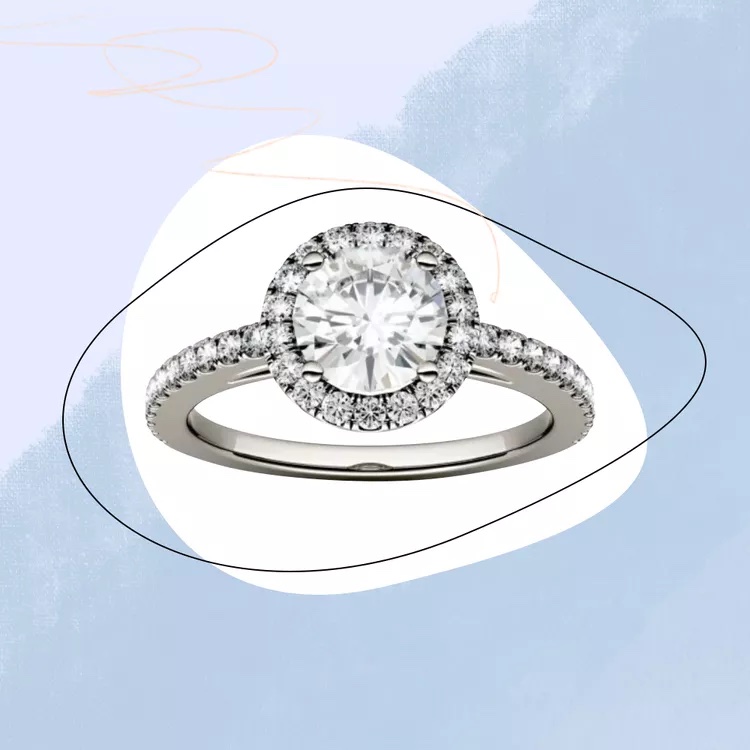
2) Moissanite
History
Moissanite was first discovered in 1893 by a French scientist named Henri Moissan, who later won the Nobel Prize in Chemistry. Initially, moissanites were thought to be diamonds, but it was later determined that the crystals were composed of silicon carbide.
About
Moissanites are the second hardest mineral in the world behind diamonds. Moissanite rings look stunning on their own in solitaire designs or alongside diamond accents.
They’re also lab-created, making them a more ethical and sustainable option than many diamonds.
Price Range
Moissanite gemstones are one of the most affordable diamond alternatives. While characteristics like colour, shape, and size can largely impact the price point of moissanites, a 1 ct. or 6.5mm equivalent can range from around $400 – $1,000.
Brilliance
Moissanite brilliance is one of the largest visual differences between these gemstone and diamonds. Due to their unique faceting pattern. Moissanites display a fiery, rainbow sparkle that can create a “disco ball” effect. This unique sparkle is why many gravitate to moissanites. On the other hand, this noticeable difference in brilliance might make them less popular among some shoppers. Moissanite has a higher refractive index than a diamond, ranging from 2.65 – 2.69.
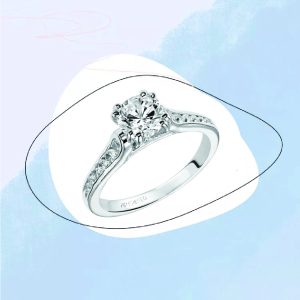
3) Aquamarine
Light blue aquamarine stones are an elegant and fresh choice that can also make your engagement ring your “something blue” (and an excellent family heirloom). Part of the beryl family, aquamarine is part of the same species as emeralds and morganites. They have a hardness rating of 7.5-8, so diamonds and sapphires would scratch them. You would want to store them separately from your other jewels, and the stone may need to be polished over the years.
Still, aquamarine is a fairly durable option that will certainly become a treasured favourite.
History
Meaning “water of the sea”, aquamarine’s name originated in the early 1700s, around the start of the Georgian era. Aquamarine was once referred to as the “Sailor’s Stone,” because ancient sailors believed that the stone would protect them from disasters at sea.
About
Aquamarine is a beautiful pale blue semi-precious gemstone. These gorgeous gems are part of the beryl family of minerals, which also includes emeralds. Aquamarine is mined in Brazil, throughout Africa and Asia. It is also the birthstone for March. Although aquamarine and blue topaz can be mistaken for each other, aquamarine is more valuable due to its rarity and natural colouring. However blue topaz is produced by treating colourless topaz with radiation. Aquamarines have a score of 7.5-8 on the hardness scale, which means that they’re durable enough to be worn as jewellery.
Price Range
Aquamarines are amongst the more affordable semi-precious gemstones, with a 6.5mm, or 1 carat equivalent, aquamarine typically costing around $700. Colour intensity will be the most important factor in determining price, as deep colours are considered the most valuable.
Brilliance
Aquamarines are beloved for combining a beautiful shade of blue with exceptional clarity, but these stones are not known for having high brilliance or sparkle. People who love aquamarines prize their soft blue colour and organic look in ring settings over something with more brilliance.
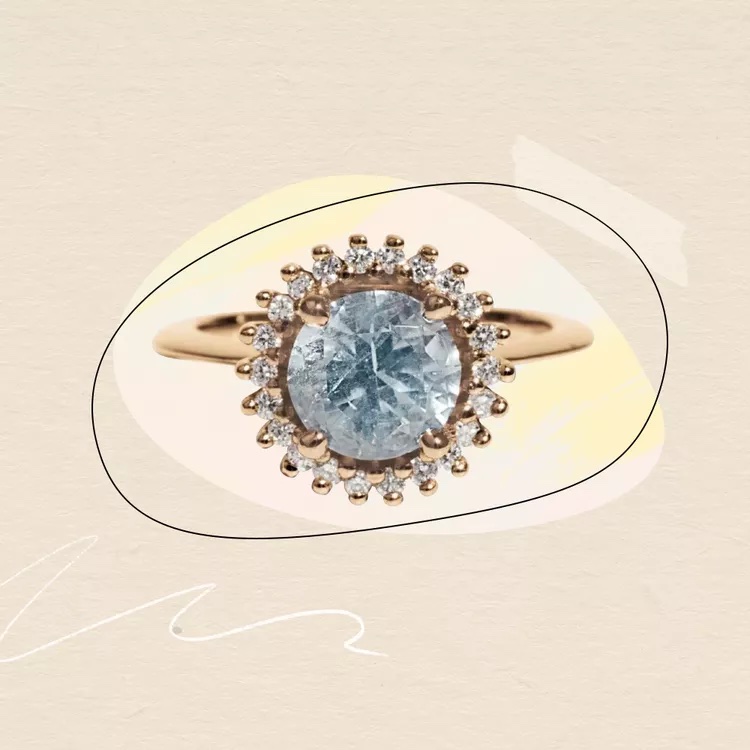
4) Emerald
They’re gorgeous green hue, emeralds are a classic choice that will really add something to your jewellery collection. Anania points out that they come in a variety of shapes that can easily be customised to fit into your dream ring.
Like aquamarine, emeralds come in at about 7.5 on the Mohs hardness scale, so it will require a bit more attention and care when being worn or stored. When shopping for an emerald, the most appealing stones will be a beautiful green, with a highly transparent appearance. Ultimately, the best emerald colour to seek out is neither too deep nor too light—look for one that’s a medium intensity and highly transparent.
Inquiring about the level of oil applied to your emerald is also crucial, as the look of stones with high levels of oil treatments will likely change over time.
History
Throughout history, emeralds are one of the rarest gemstones and make a beautiful choice for an engagement ring centre gemstone. Along with diamonds, rubies, pearls, and sapphires, emeralds have been one of the most prized precious gems throughout time. Emeralds are the gems of royalty and are the most well-known and highly prized of green gemstones. Legend has it that wearing emeralds can give you the ability to foresee the future and see the truth.
About
Like aquamarines and morganites, emeralds are a variety of beryl. Emeralds are formed when iron, chromium, and vanadium are present in beryl. More iron will give a slight blue tint to emeralds, while the chromium and vanadium are what give emeralds they’re intense green colour.
Price Range
High quality naturally mined emeralds can be valued and priced similarly too diamonds with comparable specifications. However, it is not challenging to find a beautiful emerald gem within a specific price range. Choosing a lab created emerald will also offer you lower price points. An approximately 1 carat emerald will typically cost between $1,000 and $3,000.
Brilliance
Unlike diamonds, whose clarity must be evaluated using a 10x magnification, emerald clarity is graded with the naked eye because their inclusions are highly visible. The hazy and cloudy look of natural emeralds is prized by many for its antique and organic beauty. Lab created emeralds are typically a lot more brilliant and clearer than natural emeralds. 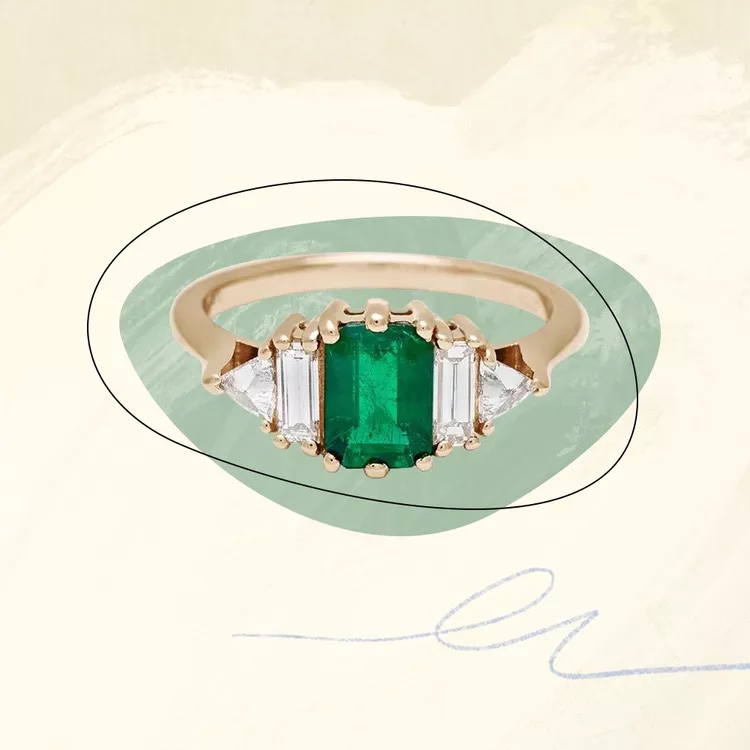
5) Morganites
A feminine pink stone that almost resembles the ultra-luxe pink diamond, morganite is a trendy non-diamond option right now. The light colour makes the stone versatile and easy to wear, and there are so many different options for it.
Anania notes that morganite is in the same family as aquamarine, and so the two are extremely similar. They both have about the same 7.5 hardness, meaning morganite is suitable for everyday wear but still needs to be treated more delicately than a diamond.
History
Morganites were discovered in 1922 in Madagascar as a new form of pink beryl and was originally called “rose beryl”. The gemologist George Frederick Kunz renamed it too “morganite” as a way to honour his patron, philanthropist J.P. Morgan. Morgan, one of the most prominent gem collectors of the early 1900s, donated many gems to the American Museum of Natural History in New York City and to the Museum of Natural History in Paris, so it’s only fitting he has a gemstone named after him!
About
Blush-hued morganite looks beautiful as the centrepiece of an engagement ring. It remind people of the pink diamond which is extremely expensive. Morganite is a pink to peach variety of beryl. Other famous varieties of beryl include emeralds and aquamarines. Morganite is considered a softer stone and ranks 7.5 to 8 on the Mohs scale of hardness. While this is durable enough to be used for jewellery, it does mean this stone should be handled with care.
Price Range
Morganites are affordable gemstones (much more than the pink diamond), making them a popular choice for those looking for pink gems at a lower price point. An approximately 1 carat morganite gemstone will typically cost between $400 and $500.
Brilliance
Apart from their beautiful colour, they are also treasured for their sparkling clarity and high degree of brilliance. Morganite looks lovely when paired with rose gold as the two naturally complement each other’s warm undertones.
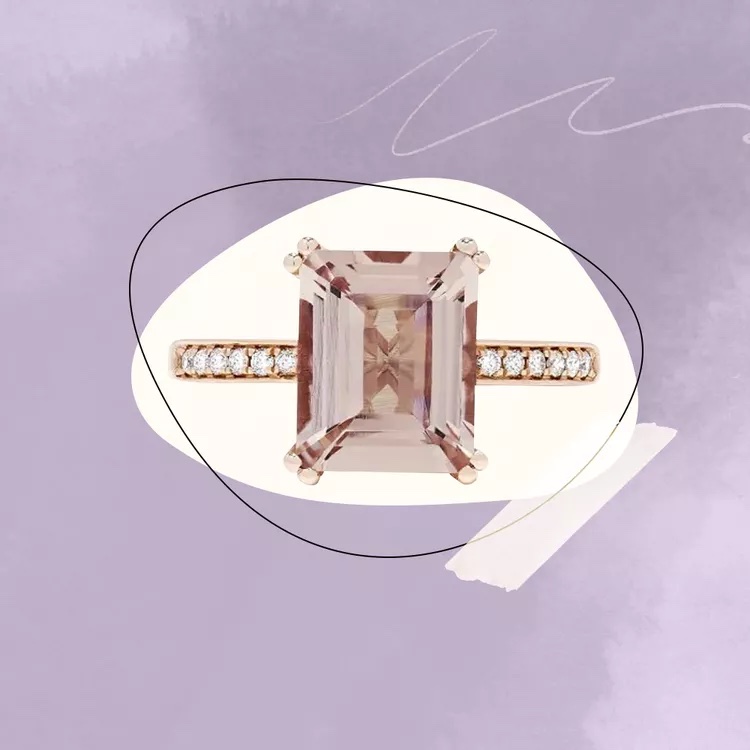
Final Thoughts
Which diamond alternative is your favourite? Do you love the look of coloured gemstone engagement rings? Let us know in the comments below or on our Instagram, Facebook!



